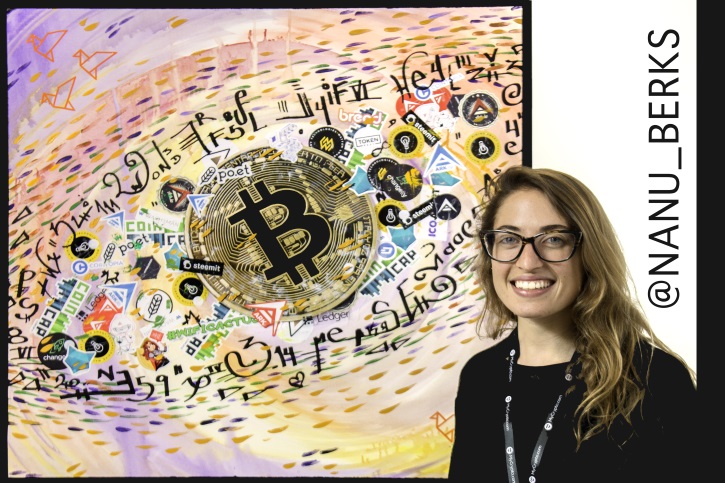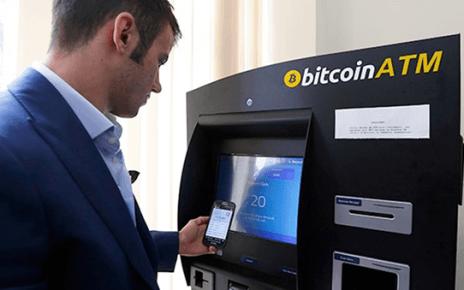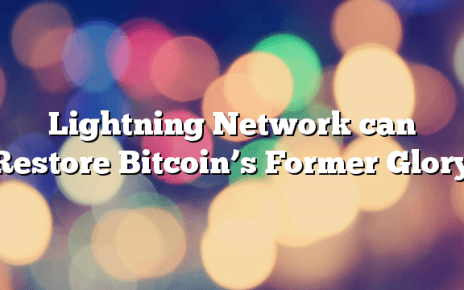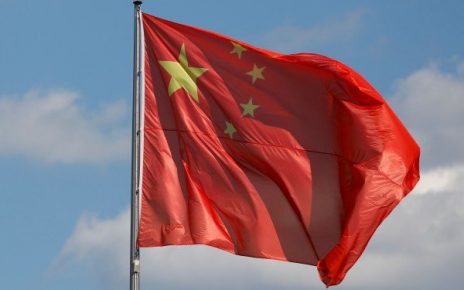Nanu Berks, an artist from Argentina who decided to start working on the blockchain art three years ago says that the art is something visual, tangible, that inspires curiosity in the people. Moreover, she thinks the art wants to communicate and hook up with the new and emerging technologies that are changing the world, such as the blockchain technology. The blockchain art is an artistic movement inspired by the distributed ledger technology and the cryptocurrencies.
Nanu Berks heard about Bitcoin for the first time back in 2012 and she says it did not seem as much at the time. However, as the time passed, she began to realize the importance and influence of the blockchain technology on today’s world. She said the cryptocurrencies gave her freedom and even the opportunity to travel. She is currently living in Austin, the capital of the US state of Texas. Berks recently created a mural in Austin in collaboration with Swarm Fund, a blockchain investment fund and in cooperation with Uloang, an artist from Venezuela.
The artist wrote several poetry books and other books to convince the people to travel. Moreover, she was speaker at various conferences related to the blockchain technology and the cryptocurrencies. Her art and her activism in favor of the cryptocurrencies enabled her to meet many people and artists with similar interests, which helped her connect the blockchain art with the psychedelic art and other artistic movements that are looking for ways to create a community around them and share their knowledge.
Berks says: “The first time I heard about Bitcoin was in 2012, even though at first I did not believe much it would function. However, after some years I was learning and even started investing in cryptocurrencies four years ago. Since three or four years ago I decided to dedicate full time to the blockchain art.”
Now she is completely dedicated to her artistic work and she explored diverse ways to support and present her art, by creating murals, installations and other smaller types of art. She also participates in exhibitions of diverse nature and spreads the message of the cryptocurrencies.
The works of Berks are influence by masters such as Gustav Klimt, Pablo Picasso, Salvador Dali, Leonardo Da Vinci and Frida Kahlo, among others. Her pieces are vibrant, full of vivid colors and movement. According to the artist, despite not having equally exciting life as Frida Kahlo, they are similar in a certain way: she was involved in a car accident that left her with a piece of metal in her hip and leg and thus limited part of her days to only painting. She says she was sad at the time, but kept on working. The appearance of the cryptocurrency influenced her life in a positive way, expanded her creativity and her interest in sharing and educating other people about the technology behind the cryptocurrencies.
She says: “It helped me travel a lot, it gave me a lot of creativity, it allowed me to share this information that not all the people have and understand. The art allows me to do it in a way that is easy to understand, so that all the people have access to this technology. Even if they do not own a computer, they can access it through the messages conveyed by my murals and paintings.”
Nanu Berks assures that she always wanted to be an artist. It was a necessity, a search for herself, for her voice: “I have always painted and have always wanted to be an artist and have the opportunity to have a voice in this movement; to be able to educate myself and other people through art, visual things or artistic installations is extremely important for me and I feel very grateful for having a voice in this system and for being able to talk about the next technologies and how we can use them to influence positively on the planet and to decentralize the power, the value and the abundance that exists on the planet.”
Berks’s arts is trying to spread the message as quickly as possible, by generating intrigue and triggering curiosity around the symbols associated to the cryptocurrencies, such as the B of Bitcoin, for example. According to the artist, the ability to help by spreading the key concepts of the cryptocurrencies and the blockchain technology through art and helping it reach the people in the simplest way possible.
She says: “If someone paints a mural and places the B of Bitcoin or something else, he or she helps generate curiosity in the people and inspires them to investigate and discover through the art.”
For Berks, it is a strategy similar to the one used by the large companies in their marketing campaigns: “How many times a person sees the M of McDonald’s or different logos, such as the logo of Nike? If someone sees the B of Bitcoin sufficient times, he or she will start asking what it is and it will start looking normal and also understand that it’s part of this technology.”
For Berks, despite the importance of the cryptocurrencies such as Bitcoin, the world’s most popular cryptocurrency, the really important element is the blockchain technology. The artist assures that art and blockchain have a really deep relationship, since the blockchain technology and the cryptocurrencies are sometimes difficult to understand, they are considered to be hypertechnical and the art generates a more friendly and effective impact by conveying the message in a more direct manner.
According to the artist, the possibilities of the blockchain technology are broad and in the art there are various paths that, in her opinion, could benefit the freedom of the artist on a monetary level, as well as bringing them the opportunity to transform the diffusion channels for their art and reach more people using the blockchain technology and the financing.
Berks says: “The cryptocurrencies are a small part of the blockchain technology. This technology allows you to tokenize your work. You can tokenize your art and exchange it directly for services. The cryptocurrencies help redefine the value.”
The idea of Berks it that an artist can create an artwork and register it in a blockchain network at a determined value (established by the artist or independently) that will be paid in cryptocurrencies or, in the best case scenario, with a token specifically created for the consume of that art.
The artwork could belong to one or various persons, reuniting the value between all of them and making them co-owners of the artwork.
This way the reach of the creators would be multiplied to the extent of the internet and blockchain and the exchange value of these creations would be established directly by the creators. This represents a new concept of the value.
Berks says: “For me the cryptocurrencies and the blockchain technology imply the redistribution of the power and the value; redefine what the value means in general (…) I can paint an artwork and tokenize it and allow the people to partially own my artwork. I can create a painting that would take three months to complete and 100 people would be the owners of that painting through microtransactions and all of them can give away this painting, one in each home and through this I can raise funds for my next painting or for my next trip. The art and the cryptocurrencies are helping to redistribute or redefine what the value means, the paintings can be tokenized.”
Moreover, the level of complexity of the blockchain technology has its parallelism in the art. For Berks, the artists can reach the same level of intellectual complexity to explain their content in a profound way, with a different reach, since they approach the spectators from the territory of the aesthetics. Berks says: “There is a documentary called Art and Physics and it explains how all the scientific discoveries were reflected in the art at the same, through the collective conscience.”
This point is extremely important for the opinion of Berks, since she considers that this parallelism, this reach of the collective mind when it comes to the more complex topics of the human creation, allows the art to be a useful instrument for the massification of the cryptocurrencies that gives them greater visibility and diffusion.
The artist says: “The art, tangibly reflects these processes that are sometimes too technological for the people to understand them or to at least spark their interest and helps the majority of people to start understanding or start becoming curious about what these systems are and this is very important, because if we do not make these systems useful for the greater audience, for the majority of the people, the systems will not be useful. They will be useful only if the majority of the people start using them.”
Berks assured that the future is promising for the cryptocurrencies and the blockchain technology, even though she underlines that it will take time and education: “I believe that such as PayPal or Venmo, the cryptocurrencies are starting to be used more widely. But it will take time and the art is one of the means that can help the massive adoption of the cryptocurrencies.”
The opportunity to redefine the value provided by the cryptocurrencies can help to transform the relationship between the spectators and the art by providing a way for the artists to make their art more sustainable and close to the ones that appreciate it.
The artist says: “I believe that if a spectator sees my QR code painted besides my artwork and donates a couple of dollars or a couple of bitcoins because her or she appreciates the art and I as an artists arrive home and find in my wallet one or several new donations from various persons that saw my work that day, it represents a more sustainable way of assuring that the money or value is distributed in a better way.”
Moreover, this helps overcome the pitfalls of the sale and exhibition of the artistic work at an institutional level, and makes the reception of the funds immediate. Also, it allows various persons to collaborate in order to complete the price of certain artworks and become co-owners of the artworks and all this can happen without the intervention of the government of third parties: directly between the artist and his or her public.
Berks explained that from time to time she places the QR code of her wallet besides her artwork, as well as in her YouTube videos. Nevertheless, she assures she does this more to foment this culture of exchanging value and educate one another than to raise donations. This system could help finance educational programmes or artworks of certain artists.
For example, if one goes to a museum and see Mona Lisa, he or she could donate a dollar to the fund of the artwork that will serve as a scholarship for art. Things we can start doing soon are incredible, but it takes education, according to Nanu Berks.
She pointed out that she shared similar ideas with other artists regarding financing strategies and collaborated with them to develop new ways in which the art and the cryptocurrencies could be combined.




